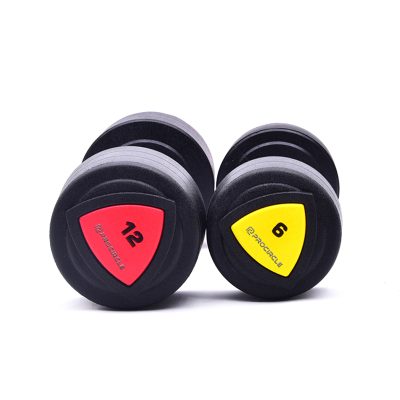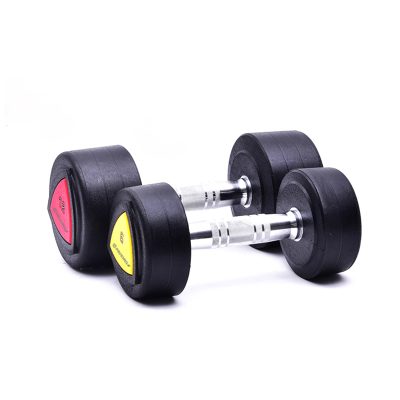The rubber-coated dumbbell is provided with a rubber bonding structure on the surface of the bell head. The bonding structure is convex or concave to increase the surface area of the bell head and the rubber and increase the bonding strength. The protrusions or depressions can be raised or recessed points or lines or surfaces. The protrusions and depressions can be provided separately or at the same time. It can also be a variety of patterns composed of protrusions or depressions.
Rubber-coated dumbbells generally have a hexagonal or twelve-angle design. It is stable and can be used for push-ups. It is commonly found in gyms.
Inside the rubberized dumbbell is pig iron (low grade is scrap iron smelting, middle grade is scrap steel cast iron). The outside is made of rubber wrapped by a press machine and then pressed. According to materials, rubber-coated dumbbells can be roughly divided into two types. One is made of recycled rubber. One is the production of new glue. Both types of rubber are a mixture of petroleum derivatives and rubber.
Recycled rubber is mixed recycled waste rubber. Most of the rubber-coated dumbbells on the market are recycled rubber dumbbells. Compared with new rubber dumbbells, recycled rubber dumbbells emit unpleasant and harmful odors, which are unhealthy. In addition, the recycled rubber is easy to age, and after training, there may be unfavorable factors such as odor remaining on the hands. But it is cheap. New rubber means that the new rubber is mixed. In addition, there is a kind of dumbbells on the market called color rubber dumbbells. The process of this dumbbell is basically similar to that of rubberized dumbbells. The grade is slightly higher.


















